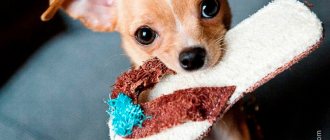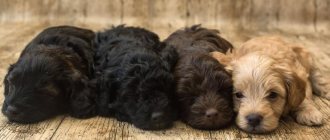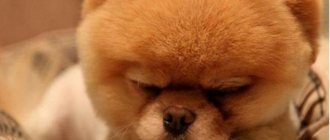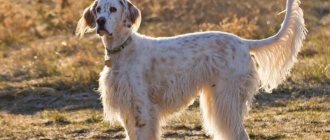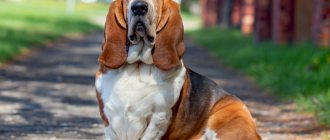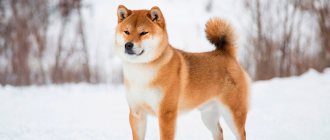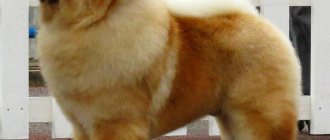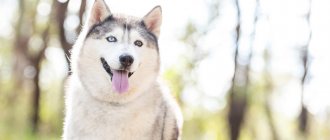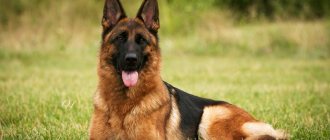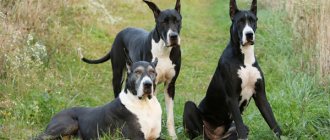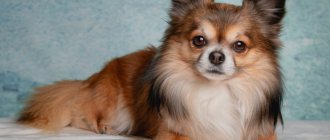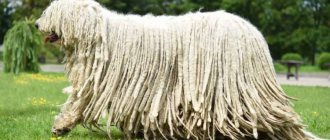The article talks about some of the breeds, names and number of types of huskies - these magnificent, beautiful, strong and intelligent dogs. Descriptions of the pets' features and their characteristics are accompanied by photographs that will help you understand what representatives of each breed look like.
Story
Laikas are Siberian hunting dogs , widely known and popular recently. It is difficult to say what exactly aroused such increased interest in the breed, perhaps the versatility of the pet, their hunting talents, love for children, or excellent guard properties.
For a long time, our heroes lived in the harsh climate of Siberia. They accompanied the nomadic tribes of small nationalities scattered throughout the north of the country. They were loyal to their owners and helped them in literally everything.
They look very tiny, but in fact they are capable of attacking even a bear. With their help, they stocked up on venison and hunted fur-bearing animals, whose fur was always expensive. It was the need for fur coats and the glory of Russian fur that attracted the attention of hunters to these animals.
Already at the beginning of the twentieth century, experiments began to work with improving the species, combining several aboriginal species into one, combining all the advantages. The first classification of the group also appeared. It was printed by Shirinsky-Shakhmatov and included thirteen positions. Later it was recognized as incorrect, but it was on its basis that a new classification was created, which has not yet lost its relevance.
Interesting Facts
The following interesting facts are associated with the East Siberian Laika breed:
- This breed was on the verge of extinction after the collapse of the Soviet Union, which was due to the closure of nurseries that were breeding them. Today, active work is being carried out aimed at restoring the population.
- According to scientists, the distant ancestor of the East Siberian Laika is the fossil dog Inostrantsev, the remains of which were discovered near Lake Ladoga at the end of the 19th century.
- To conduct an expedition in Norway, in the 90s of the 19th century, the famous scientist Fridtjof acquired hardy hunting dogs from Russia of the East Siberian Laika breed.
Description of the breed
There are many breeds that are part of the husky group and have a common history of origin. For ease of understanding, we will divide them into several varieties. To begin with, let’s say thanks to the USSR, and let’s remember the legacy that is still significant for us today.
In those days, it was necessary to create new breeds, improved and adapted to living conditions in the Soviet Union. Thus, we can include the following as factory representatives of the huskies group:
- Russian-European,
- East Siberian,
- West Siberian,
- Karelian-Finnish.
Not all of them were recognized by the World Canine Federation, and most are popular only in Russia, even after recognition.
Breeds untouched by man and retaining their natural Aboriginal charm include:
But it was not only in our country that huskies were valued and used as four-legged friends of hunters. In Europe they enjoyed no less success and respect. The most famous European huskies include the following breeds:
- Finnish Spitz,
- Karelian bear dog,
- Swedish Elghound,
- Helleforshund,
- Yamthund,
- Norwegian Elhund and Buhund,
- Norrbotten Spitz.
The entire genus has common features, for example, medium size, maximum height of up to sixty-five centimeters, erect ears in the shape of triangles, thick and warm undercoat, as well as a fluffy curled tail located on the back with an inclination to the side.
Absolutely any coat color is allowed. Depending on the color scheme, you can even determine what species the dog belongs to.
The common character traits that are present in all of these breeds are also surprising. The pet is very devoted to its owner and needs constant communication and attention. But at the same time they are not intrusive and very smart. With their developed intelligence for representatives of four-legged friends of man, they can be cunning, very stubborn and headstrong. Therefore, it is better to entrust training to professionals.
They do not require complex care and, thanks to their reliable undercoat, spend the winter well in an unheated enclosure. You will only have to comb out the fur during the shedding period, which occurs a couple of times a year.
Premium dry food can be used as the main diet. If you think that your pet deserves only natural products prepared by your own hands, then keep in mind that forty percent of the diet is meat. The only cereals he can eat are rice and buckwheat. It’s better to forget about legumes and potatoes. No, and of course, absolutely nothing sweet, salty, peppery, smoked or floury is allowed.
Is there a mini-husky?
Let us immediately answer the question posed - no, it does not exist . Just like people, dogs also occasionally have dwarfs in their litter. If you select any puppies and cross them with each other, there is no guarantee that their offspring will be the same small size. They can give birth to quite standard individuals. Therefore, breeding a mini variant is not so easy.
Fraudsters can offer you this variety, passing off just tiny and poorly developed puppies as mini dogs. When you bring the baby into your home and begin to fatten it, you will quickly be convinced of the normal proportions of the pet.
Depending on the type, a puppy can cost from five thousand rubles to ninety thousand rubles. The price is adjusted by your requests and agreement with the breeder. There is no need to be scared right away; if you are interested in a pet to protect your home or as a family pet, then it will not cost much. But if you and your ward are going to win international exhibitions, then ninety thousand may not be the limit.
Aquarius - Jack Russell Terrier
If a Jack Russell catches you red-handed (you are reading the newspaper here when the dog has not been playing for five minutes!), you will not be able to get away. You'll have to throw the ball again - and throw the ball again. Ball. Ball. Ball. Ball. There is, of course, another option - you can abandon the Jack Russell, in the sense of being left to the mercy of fate: let him entertain himself, since he is such a funny fellow! But it should be remembered that the Jack Russell Terrier is not just a merry fellow, but a hunting dog, ready to dive into a hole with anyone and take a fight there. So if your Jack Russell begins to entertain itself, there is a chance that you will not be very happy with the result. I mean, you'll be tortured to hide the corpses. So you better throw him the ball. And go to the skating rink with Aquarius. Otherwise it will be worse.
Popular
- Blue lipstick for Sagittarius, and contouring for Aries: beauty trend for the zodiac sign
Reviews
- “I only learned that mini huskies didn’t exist when our Charlie was two years old. You won't believe it, but it was really small and was sold to us as a mini. They deceived me, of course, but my whole family is still grateful to the breeder, because Charlie is great.”
- “My mini Jessie has grown to sixty centimeters and is still growing. And she was such a little puppy.”
The most commonly found Japanese dog breeds on the streets and in city parks are the Japanese Chin, and the most frequently mentioned in the media are the Akita Inu. The latter became famous because back in 2012, the governor of Akita Prefecture presented the President of the Russian Federation with a puppy of this breed, thereby expressing gratitude for the assistance provided to Japan. Putin, in turn, presented the governor with a huge fluffy cat.
The most common Japanese dog breeds found on the streets and in city parks are the Japanese Chin, and the most frequently mentioned in the media is the Akita Inu.
In addition to these two, Japanese dog breeds include more than 10 species that are quite rare in Europe and the USA. They all have common characteristics: the ears are small and erect, the tail is curled, the eyes are slightly slanted, and the shape of the head is wedge-shaped. According to the canine rules existing in the world (FCI standards), the country that has entered the breed into the international register has the right to call it its own.
Japanese Chin
We should start the review with the most charming Japanese dog, which has long taken a place in the hearts of a large number of people. We are talking about the Japanese Chin. This little dog is so cute, active and playful that it simply has no equal among miniature pets. Only the Pekingese could compete with her, but his short legs and heavy landing simply do not allow him to catch up with the perky, self-confident and light little one.
The Japanese Chin is filled with a sense of self-importance and wants to be the center of everyone's attention, so it becomes very upset if its own attention is rejected. For more than 1000 years, chins belonged only to the imperial family, being royal favorites. One of the emperors even ordered them to be worshiped, declaring the dogs sacred. They had their own servants and doctors, and only members of the imperial family could own them. Especially miniature specimens were kept in cages, in a suspended state. A pair of Chins was given to Queen Victoria in 1853, which influenced the further development of the breed.
The Japanese Chin is unusually graceful, with a proud posture and luxurious coat. The coat color can be white with either black spots or red markings. The more distinct and brighter the red color, the better it is considered. The spots on the head and ears should be placed symmetrically relative to each other. Some believe that chins are descendants of a lion and a butterfly: they really look like a lion with their muzzles and are mobile, fluttering like butterflies.
It should be taken into account that the soft long hair of Chins remains on carpets and upholstery when they shed.
Miniature chins have a unique manner of movement: when they walk, they raise their paws high and throw a luxurious tail over their back in a ring. The owners of such dogs consider their pets to be unusually intellectually developed and emotionally rich: the pet is surprised, happy, jealous and offended, is attached to the owner and fearlessly rushes to his defense.
The difficulties of keeping a miniature Japanese dog include the need to protect her from overheating and fatigue in hot weather, since the dog may begin to choke. It is enough to wash them once a month and constantly maintain the good appearance of the coat by simply combing them with a brush or comb. Otherwise, chinas do not create any problems for their owners.
Care and nutrition
Laikas are fairly unpretentious animals, but they still require care for normal development.
Wool is a subject of special attention. In a healthy dog it is smooth and shiny. It is necessary to comb the coat as often as possible, since the animal sheds very often. Wash the dog as needed.
Laikas are active animals; you need to take them for walks more often, provide them with regular movement and spacious areas for walking. Otherwise, they may get bored and lose their physical fitness.
For food they choose porridge, meat, and offal. You can give vegetables and dairy products. It is also useful to give bones to strengthen teeth.
Laika, like no other breed of dog, is very sociable; its representatives need a lot of attention. Young dogs can be trained. It is useless to train adult dogs. From an early age, the pet is taught to obey. He must obey his master and follow his commands. If you do not carry out any educational work in childhood, then it will be much more difficult to deal with an adult.
The process of education and training is based on strengthening basic reflexes. Laikas successfully carry out basic dog commands: the earlier the training begins, the better the effect.
Japanese Akita
The second most important and popular breed, and maybe even the first, is the character from the Hollywood film “Hachiko”, based on real events. Shocked by the devotion and love for his owner shown by the Akito Inu dog, who waited for him for all 8 years until his death, the Americans wanted the same devoted friends to live in their homes. Residents of the United States, through targeted crossbreeding with larger dogs, even developed the American Akita, or Big Akita, breed, which, at the request of the Japanese side, was separated into a separate category in 1988.
Japanese Akita is one of the most famous Japanese Spitz breeds. It was once bred to hunt wild animals, so to this day a dog of this breed is capable of a fierce attack and formidable defense. Based on these qualities, the dog is used mainly for protection. The dog is easy to train and has an even temperament. Akito Inu is affectionate with the whole family, although he is a reserved and proud dog, absolutely fearless. It has small membranes between its toes, which allows the dog to swim well.
Today, Japanese Akita serves as a symbol of Japan, and its figurine, received as a gift, is considered to bring happiness and health.
Despite its many advantages, such a dog is not suitable for everyone: it needs strict training, a lot of physical activity and a carefully selected diet. In addition, this magnificent watchdog needs active socialization and needs to be walked for at least 2 hours a day.
Feeding
It is recommended to feed dogs of this breed according to the regimen, 2 times a day. The main part of the daily ration should be given to the animal in the morning, and in the evening the pet is offered a third of the total amount of food.
For these purposes, you can use both natural food and dry food.
Helpful information:
What vegetables and fruits can you give your dog?
In the cold season, especially for animals living on the street, it is recommended to include warm, liquid food enriched with a high fat content in their diet.
To maintain good shape, these agile and active dogs need to be provided with a sufficient amount of protein food.
Shikoku, or Shikoku
The name of this breed is translated differently, so in the literature you can find references to Shikoku and Shikoku. But this is the same very rare Japanese Shikoku breed, which is little known in foreign countries. The hunting dog that is Shikoku has been known in the land of the rising sun since ancient times, and under a variety of names. Its other names: Kochi-ken, Kochi-inu, Kochi-ken, Mikawa-inu. It was originally used for hunting large animals such as wild boar or deer.
Shikoku is slightly similar to a wolf: it is also hardy, always alert and requires enormous loads and great willpower from its owner. It is not recommended for beginners to own one, and there is no place for it in the city either. It is suitable for people from the suburbs. Shikoku was named a Japanese Natural Monument in 1937.
West Siberian
This breed is the most numerous, in terms of the number of heads, and the most common among hunters. It is distinguished by its predatory appearance; it is more like a wolf in color and temperament than others. Not large in size - 52-60 cm at the withers, with a weight of 16-22 kg . Externally a strong animal, elongated format. It is considered a universal hunting dog.
Country of origin: USSR (Russia). The breed received recognition in 1980 and is officially registered by the International Canine Organization.
In proportions and appearance it is not much different from the East Siberian. A special feature can be considered deep-set, sharply slanted eyes and a predatory gaze. Preferred colors : white, piebald, brown, gray, red.
The breed does not cause any difficulties in caring for. West Siberian huskies are unpretentious. They can go for a long time without water and food, work hard, and hunt. Such dogs need space; living in an apartment will negatively affect their well-being. In order for a pet to live on the street, it needs to be equipped with an enclosure or a booth with a soft chain. It is important to regularly go hunting with your animal or just for walks in the forest.
Read a detailed article about the breed: “The West Siberian Laika is an excellent hunter and a cheerful companion.”
A puppy without a pedigree can be purchased for 3,000-5,000 rubles , a pet-class or breed-class for 15,000-20,000 rubles , a show class dog for 25,000 rubles .
Kishu, or Kishu
Kishu is an aboriginal hunting dog that appeared on its own without human intervention, on the hills of Kishu Island, where its name comes from. Its color is usually white, monochromatic, although red, brindle or sesame are also found. The character is calm. Kishu is silent and does not bark over trifles, although she is vigilant and distrustful of strangers. Due to all these qualities, it is perfect as a watchman and security guard.
Kishu can be kept in the city if you remember that the dog needs activity and physical exercise, for example, participating in bicycle rides with the owner. If the right conditions are created for her, she will faithfully serve her owner for many years.
Proper training
These dogs are energetic, inquisitive, playful, stubborn and cunning. Therefore, puppies need training. They are able to remember a huge number of commands and carry them out, provided they are properly trained. In this regard, it is better to seek help from specialists, since it is difficult to train these animals due to their restlessness and playfulness. Therefore, education often ends with the dog training the owner, and not vice versa.
If you decide to train your pet yourself, then you need to do it in a playful way, directing his energy in the right direction, show a lot of patience, and under no circumstances raise your voice at him or be rude to the animal. Praise him often and reward him with something tasty. And the dog quickly learns everything. If the puppy is well brought up, this will help the owners get satisfaction from communicating with him.
The Klee Kai is a willful dog, it is capable of making its own decisions without waiting for the owner’s commands. For this reason, it is necessary to train your puppy on a leash from a young age when walking. These dogs are very affectionate and loyal to their owners, but are suspicious of strangers. They get along easily with other pets in the house, but are intolerant of strangers.
Sanshu Dog
The Japanese dog Sanshu is a breed of service dog. She was brought out purposefully, wanting to get a small animal for guard duty. The result was a strong, beautiful dog that weighs about 20 kg. Due to its small size and weight, as well as its excellent watchdog qualities, Sanshu can be kept both outside the city and in city apartments.
The color of the animal can be very different, the coat is short and does not require special care. The body is proportional, strong and healthy. Sanshu is perfect to become a companion not only to one, but to all family members. She gets along with other animals in the house and gets along easily with small children. Sanshu has no hunting skills, which guarantees her peaceful interaction even with cats.
Northern Inuit
Another dog breed that is similar to the Husky is the Northern Inuit, which is distinguished by its white color. This breed first appeared in Canada, and in the UK it began to slowly gain popularity. The height of an adult dog varies between 60-77 cm, and its weight is 24-51 kg.
The coat color can be completely white, or white-gray and dark gray. The Inuit is a balanced breed with good learning abilities. They appeared by crossing a Siberian Husky and a German Shepherd.
Kai Dog or Kai Inu
The Kai Inu has many names, including the Tiger Dog. The breed is aboriginal, which for a long time was generally considered a mongrel. Today it is spoken of as a classic Japanese breed of hunting dog. Kai Inu is of medium height, weighing about 20 kg, with a strong body and well-developed muscles, short coat, mostly brindle in color: stripes on a red, black or motley background.
The dog is independent, independent, devoted to only 1 person and obeys only him. Has a tendency to dominate in relationships with humans, so it needs strict training. Although the dog is not aggressive and is adequate in the presence of strangers, it is recommended to keep him outside the city, especially since he needs a lot of physical activity. Interestingly, Kai Inu can climb trees, and quite well.
Sakhalin Husky
The Sakhalin Husky, called the Karafuto-Ken by the Japanese, is considered an endangered breed that survives today in small numbers only in Japan. It was once bred in Russia to transport goods, so the dog is strong, large and very independent. She has a calm character, good health and great stamina.
Although the husky first appeared in Russia, where it was called the Sakhalin Laika, the breed is currently under the patronage of Japan. Gone are the days when local tribes used it to bait bears, and today the Husky is a beautiful and balanced animal, very loyal to its owner. During the Second World War, these huskies were considered the best for military service on the eastern outskirts of the country.
Health
East Siberian Laikas are distinguished by good, strong health. However, representatives of this breed may be susceptible to the following diseases:
- Retinal atrophy.
- Pathologies of tooth enamel.
- Viral diseases.
- Clouding of the eye lens.
Therefore, it is important to get vaccinated in a timely manner, pay attention to regular examination of your pet’s eyes and teeth, and contact a veterinarian if alarming symptoms appear.
Ainu Dog or Hokkaido Dog
Hokkaido, or Ainu, Ainu-ken, Seta, Shita, also participated in the Second World War, but on the side of the Japanese. Used to transmit information and search for enemy camps. Like Shikoku, it was declared a Japanese natural monument in 1937. The ancestors of Ainu were dogs that participated with the Ainu tribes in hunting bears and other large animals.
Hokkaido have retained all their hunting animal instincts, which causes them to have a rather cruel disposition with a very cute appearance. Ainu does not tolerate other animals and strangers, and in addition, he constantly fights for power with anyone who claims it. Therefore, keeping such animals in a city apartment or large family is not recommended.
Other breeds worth mentioning include the Japanese Spitz, Japanese Terrier, Ryukyu, Jomon Shiba, Shiba Inu and Tosa Inu. But we can talk about them next time.
Husky is considered one of the most popular breeds in the world.
However, there are many dogs similar to him. Some of them are almost as beloved and popular, others are less known.
Finally, there are breeds similar to the Siberian Husky that few non-specialists have heard anything about.
Why are they all remarkable and can these breeds be considered related to huskies?
Useful video
The video explains the difference between a husky and a malamute:
Creating popular breeds in miniature has long been practiced by dog handlers. This need arose in connection with life in big cities, where many people live in apartments, and private houses are located remotely from the city center and are not accessible to many.
Laikas are loved by many and perhaps you also dream of this fluffy and loyal pet. But does mini-husky really exist, or are you being scammed to get rich off your dreams? Let's try to understand this issue.
Breeds with external similarities
Malamute
This is just like the husky, a sled dog of the aboriginal type, only larger. This breed was intended for carrying heavy loads and is one of the oldest.
Outwardly, Malamutes resemble wolves. Their sizes range from 60 to 63 cm at the withers for males and from 57 to 59 cm for females. Weight, depending on gender, can be from 34 to 40 kg.
The body is compact and strong. The head is moderately wide, but proportional to the body, the muzzle slightly tapering towards the nose. The ears are erect, triangle-shaped, slightly rounded at the tips.
The eyes are small, dark, slightly slanted. The expression of the muzzle is intelligent, friendly and calm. The tail is carried over the back, but is not curled. The wool is two-layered, consisting of soft down and coarse guard hair.
By nature, these are friendly, calm and balanced dogs, distinguished by intelligence and intelligence. However, due to the Malamute's hunting instinct, it can be aggressive towards smaller animals and, moreover, strives to take a dominant position among other dogs.
They are similar to huskies, first of all, in their color: with a light mask on the face and lightening on the neck, chest, belly, limbs and, often, on the tail. In addition, both of these dogs have triangular ears, thick coat consisting of two layers and a fairly long, well-furred tail.
Inuit
An officially unrecognized breed of dog that looks like a wolf, which was bred using huskies, malamutes, German shepherds, and possibly other, mainly sledding breeds.
Dimensions can range from 59 to 76 cm at the withers, and weight can range from 25 to 50 kg.
The body format is close to square. The head is in the form of a wedge, the slightly elongated muzzle is equal in length to the skull. The eyes are almond-shaped, their color can be golden, amber or brown; there are also Inuit with blue eyes. The ears are erect, slightly rounded, set quite close to each other. The nose is usually black.
The physique is moderately strong and harmonious. The line of the back is slightly sloping towards the croup, the chest is deep and quite wide, the belly is slightly tucked. The tail is straight or sickle-shaped, hanging down.
The coat is thick and dense, consisting of a hard spine and soft undercoat, with slight pubescence on the tail, and a small collar or something like a small mane on the neck.
The most characteristic colors of the Inuit are pure white, pure black and grayish wolf, and often there is a lightish mask on the muzzle, giving these dogs a resemblance to a husky.
Their character is not simple: they, like huskies, are characterized by stubbornness and self-will. In addition, Inuit are dominant towards other dogs and can be overly distrustful of strangers.
Volchak
Brought out in Czechoslovakia as a result of an experiment on crossing German shepherds and Carpathian wolves conducted in 1955.
The physique is similar to a wolf, it is characterized by a slightly stretched body, small erect ears and a slightly flattened, but at the same time deep chest. The forelimbs are level and straight, spaced rather narrowly. The tail is set low, and when calm it hangs down and reaches the metatarsus.
Height is at least 65 cm, and weight is from 20 kg.
Wolfdogs are distinguished by their temperamental, rather active and playful disposition. But due to the presence of the blood of a wild predator, they are aggressive towards other animals.
Alaskan Klee Kai
This breed of dog is very similar to a husky, only it is very small. Her height ranges from 34 to 42 cm, and her weight ranges from 5-11 kg. The breed first appeared in Alaska, they are gray and white and black and white in color, and their coat can be either long or short. They do not require special care, as they are as clean as huskies.
During the shedding season, it is recommended that your Alaskan Klee Kai be brushed daily and should be bathed 3-4 times a year. The Alaskan Klee Kai is very loyal to its owner, however it can be aggressive towards strangers. It is not recommended to leave such dogs alone with children, as their behavior can be very unpredictable.
Larger breeds
Greenland dog
It is distinguished by an excellent sense of smell, strength, endurance, stamina, unpretentiousness and the ability to navigate the terrain well.
The head is similar in shape and size to a wolf: the skull is wide and slightly convex, the muzzle is short and moderately wide, slightly tapering towards the nose. The ears are triangular, small in size, erect. The eyes are dark, slightly slanted.
The body is strong and muscular, the neck is quite short and powerful, the chest is wide and voluminous. Limbs are strong, parallel and straight. The tail is thick and fluffy, relatively short, usually carried over the back.
The wool is two-layered, very thick and harsh. Any color of a Greenland dog is acceptable, except for albinism.
By nature, Greenland dogs are quite temperamental and friendly towards people, although they can be overly self-sufficient and independent. They do not recognize every person as an owner, but only the one who can achieve their respect.
Akita Inu
A large, Spitz-like dog used as a hunting and guard dog. The height at the withers is from 61 to 67 cm, and the weight is 40-50 kg.
This is a strong and robust animal with a harmonious physique. The head is quite large and heavy, but at the same time proportional to the body, the transition to a short muzzle is well defined. The eyes are small and triangular. The ears are medium-sized, erect and very dense. The body is muscular and strong, slightly stretched in length.
The Akita Inu coat . It consists of elongated and rather coarse hairs of the top layer, a hard but somewhat shorter awn and a soft dense undercoat. The most common colors are red, brindle, sesame or pure white.
Akita Inu is devoted to its owner and, if properly raised, is not aggressive. It is believed that her character contains feline traits, such as some detachment, as well as the habit of washing herself with her paws.
They are similar to huskies not only in appearance: both of these dogs are quite independent and independent, in addition, they both have hunting instincts.
American Akita
The body format is slightly stretched, the chest is voluminous and powerful, the back is straight, the limbs are parallel and strong. The tail is fluffy, usually curled into a complete or incomplete ring.
The coat is double, consisting of a soft and relatively short undercoat, as well as a thick and harsh elongated awn. Oh beauty can be anything.
The character is balanced and calm. These are friendly, but at the same time careful and vigilant dogs.
Karelo-Finnish
A breed bred in Russia, more specifically, in Karelia. Adapted for hunting birds, furs, and small ungulates. Previously, the standard separated Karelo-Finnish Laikas and Finnish Spitz. Now these dogs are considered one breed line.
Recognized since 1935 by the International Canine Organization, they belong to the 5th group and 2nd section. Since 2006, 2 livestock have been indicated: Russian and Finnish.
The dog is of a square format, the shortest among all its brothers: at the withers, representatives reach 42-50 cm , weigh about 7-12 kg . A special difference is the juicy red-red color .
Like all huskies, Karelians love freedom and space. They can live in an apartment due to their small size, but it is better to provide them with an enclosure or yard. The area must be fenced. These huskies do not tolerate hot weather well, so it is better to breed them in a temperate climate. Dogs need proper coat care.
Read a detailed article about the breed: “Karelo-Finnish Laika (Karelka) is a Russian hunting breed.”
These animals can be considered one of the most expensive among their brethren. But it is possible to find a puppy without a pedigree for 5-10 thousand rubles . Dogs with status will cost 15-70 thousand rubles .
